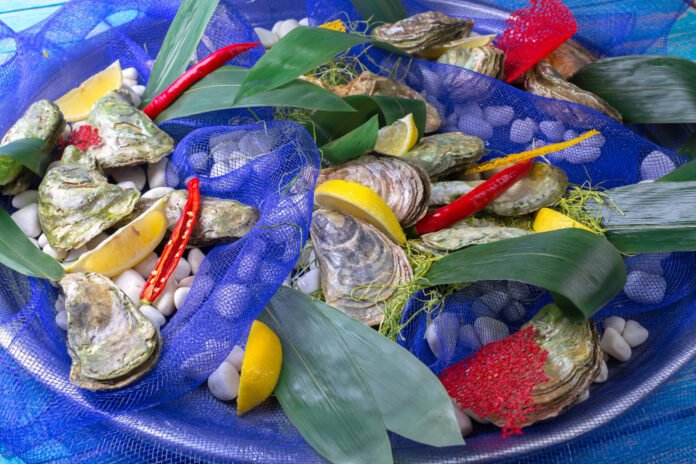Intro:
wonder seafood has long been a culinary treasure cherished across cultures and continents. From the briny depths of the oceans to the bustling seafood markets in coastal towns, the allure of fresh, flavorful, and nourishing seafood dishes never fails to captivate both the curious foodie and the seasoned gourmand. “Wonder Seafood” explores the magic, variety, and benefits of seafood in today’s gastronomic world. This article dives into the wonders of ocean bounty, offering insights on flavors, health advantages, sustainability, and cultural significance.
1. The Rich Diversity of Seafood Around the World
Seafood is not a single ingredient but a vast category of edible marine life that includes fish, shellfish, mollusks, crustaceans, and even seaweed. Each region of the world boasts its own unique oceanic delicacies. For instance, Japan is renowned for its precision-crafted sushi and sashimi, showcasing raw tuna, salmon, eel, and octopus. In contrast, the Mediterranean coast features grilled sardines, calamari, and anchovies prepared with olive oil and herbs. In Southeast Asia, spicy prawn curries, crab stir-fries, and fish soups are cultural staples. What makes seafood so universally appealing is its adaptability — it can be fried, grilled, steamed, baked, raw, or even fermented. The sheer diversity of species and preparation techniques contributes to its global culinary wonder.
2. Health Benefits That Make Seafood a Superfood
Seafood is one of the most nutritionally valuable food groups available. Rich in omega-3 fatty acids, lean protein, vitamins D and B2 (riboflavin), calcium, iron, zinc, iodine, magnesium, and potassium, it offers a powerhouse of health benefits. Omega-3s in particular support heart health, reduce inflammation, and promote brain function. Regular seafood consumption has been linked to a lower risk of heart disease, depression, and certain autoimmune conditions. Unlike red meats, fish such as salmon, mackerel, and trout contain healthy fats and fewer saturated compounds. Even shellfish like oysters and mussels are loaded with nutrients and can support immune function and metabolic health. This makes seafood not only delicious but also an essential part of a balanced diet.
3. Sustainability and the Future of Ocean Harvesting
As global demand for seafood grows, so too do concerns about overfishing and environmental degradation. Sustainability in seafood production has become a critical issue. Overfished populations and destructive fishing practices threaten ocean ecosystems and biodiversity. However, there is hope through responsible aquaculture, eco-labeling, and community-based fisheries. Organizations like the Marine Stewardship Council (MSC) help consumers identify sustainably sourced seafood products. Additionally, innovative practices such as vertical ocean farming and integrated multi-trophic aquaculture (IMTA) are being explored to meet future demands without harming marine environments. The future of seafood hinges not just on supply but on conscious efforts by consumers and industry stakeholders to protect the oceans while still enjoying its bounty.
4. Seafood in Cultural Traditions and Celebrations
Across the globe, wonder seafood holds a revered place in cultural festivities and traditions. In coastal India, fish dishes are sacred in wedding feasts, while in the Philippines, grilled milkfish and shrimp stews mark family reunions. In Italy, the Feast of the Seven Fishes is a cherished Christmas Eve tradition involving multiple seafood courses. In Scandinavian countries, pickled herring and smoked salmon are centerpieces of national holidays. These customs not only highlight seafood’s culinary versatility but also its emotional and cultural significance. Seafood often represents abundance, connection to nature, and communal joy. Whether served at a street food stall or a gourmet restaurant, seafood has an ability to bring people together and evoke memories that transcend generations.
5. Tips for Choosing and Preparing the Freshest Seafood
For many home cooks, the idea of preparing wonder seafood can be intimidating due to its delicate nature and the need for freshness. However, learning a few simple tips can make a world of difference. When purchasing seafood, look for clear eyes in fish, firm flesh that springs back when touched, and a mild sea-like smell — not a strong fishy odor. Shellfish should have tightly closed shells and be kept cold. If buying frozen, ensure it’s vacuum-sealed and free of freezer burn. In the kitchen, gentle cooking methods such as steaming, poaching, or grilling help preserve the flavor and texture. Pairing with lemon, herbs, garlic, or butter enhances the natural taste without overpowering it. Once you understand how to handle it properly, seafood becomes one of the most rewarding and enjoyable ingredients to cook.


